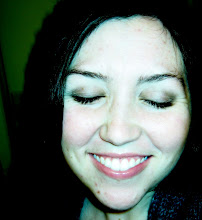
My first impression was “Wow! This book is thicker than the other two combined…more like a textbook…and wow! higher quality color images!” I also recognized, by flipping through the book, several puppets from the student work that was posted on YouTube. I was happy to know that I would be able to see the puppets that were used to create such high quality student work broken down within the text. As compared to Brierton’s work, I could tell this was a more professionally crafted resource but I did find the thickness a bit daunting.
The overall practical content of the book was almost exactly the same as that of the Brierton books combined. There were more examples and pictures of each idea or technique and the content was a bit more detailed and in-depth, but after looking through it all I could see that the Brierton books held their own.
This book would be a good textbook resource (~$30 from Amazon.com) for a class on stop-motion animation because it includes all of the necessary information from basic art principles to specific creative techniques in addition to some history and interviews. The overall scope of this book makes it a more complete resource. Unlike the Brierton books, the references Priebe uses are more universal (less specific to one area of the country). I found the overall organization of this book to be very successful. The chapter-to-chapter progression was very logical. Within the chapters I particularly appreciated the supply lists which were accompanied by pictures of all the supplies even ones that most people would know without a visual reference. The inclusion of those pictured supplies demonstrated to me a thorough coverage of the topic; that the author is doing his job to clearly present the subject matter.
There are several interview chapters interspersed throughout the technical chapters which add another dimension to the book. I found the inclusion of the perspectives of real life animators besides the author to be very beneficial. These interviews encouraged me to go beyond the pages of the book into my own mind for ideas as opposed to the one-way, local-store picture presented in Brierton’s books. I feel that Priebe expects more creative freedom and deviation from the text on the part of the reader. It is as if he has approached the task of creating a stop-motion animation resource from his teacher perspective in full appreciation and anticipation of the inevitable differences of his students/readers.
The last chapter which talks about making the film itself shows original storyboard images alongside corresponding frames from a finished movie. This provides a perfect illustration of the need to think about everything in depth prior to turning the camera on. With proper planning, you are free to simply follow the directions you have written for yourself. When your directions are good, you are able to come full circle.
From this book I take away:
- I need to plan, plan, plan, plan, plan, and then execute.
- MagpiePro is definitely an important tool.
- I can add epoxy putty to the armature wire in areas which should never bend, effectively creating epoxy bones and wire joints.
- I can use the computer to help after filming, for example to edit out puppet supports used during filming.
The text could be larger and the pictures smaller for easier reading, but overall this book is a well-crafted and considerate exploration of the art of stop-motion animation. The author’s love and knowledge of the process are apparent in his writing and translate into the success of his students as well. This resource alone would have taught me everything I needed to know about my stop-motion project and I know it will prove to be worth every penny.



